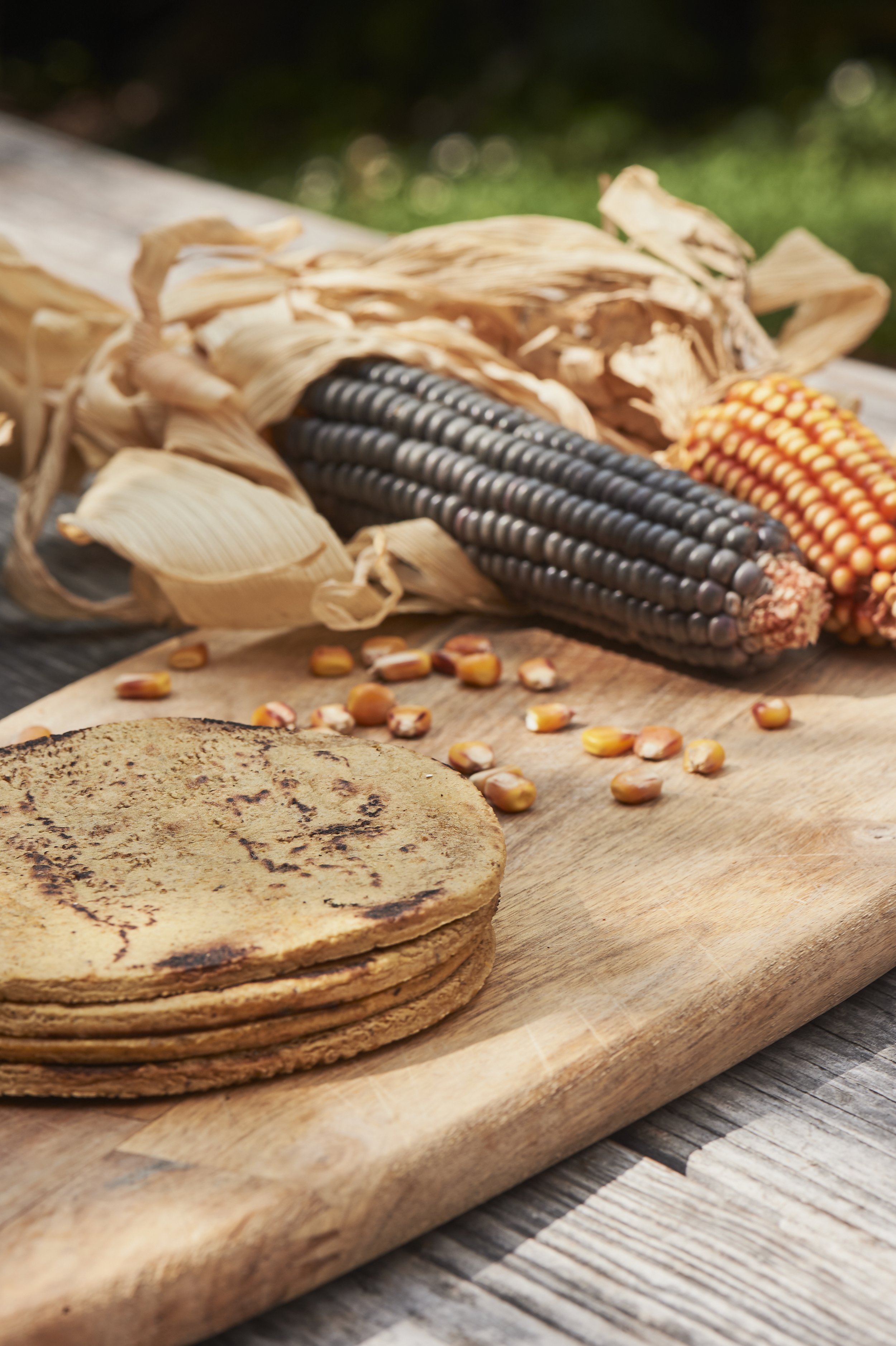
What is an Arepa?
An arepa is a round patty made of ground corn and is a staple dish in Colombia and Venezuela. Traditionally arepas were made with heirloom native open pollinated corn specific to each region of the Andes. The characteristics vary by color, flavor, size, and thickness depending on the region. It can be topped or filled with vegetables, eggs, cheese, hogao (tomatoes, scallions sautéed on olive oil), beans.
While native to South America, corn has been used in similar ways throughout the Americas, including what we now call Vermont
Over the last 50 years the tradition of growing heirloom corn to make the arepa has declined, as corn has become one of the world’s most commodified and genetically modified grains. With the aperture of the Free Trade Agreement in the 90's Colombia went from producing one million hectares of corn down to 300,000 and started importing GMO corn from the US. We believe that significant cultural heritage around food has been exploited. The growth of conventional GMO corn has proven detrimental to waterways, ecological systems and biodiversity. Growing corn organically and sustainably can help to restore soil habitats through the process of regenerative agriculture, using cover cropping, rotational grazing and no-till processes. At the same time it brings back to life that part of our culture.
Regenerative Model
What if we could grow an heirloom corn, produce a traditional arepa and help regenerate ecology and community?
With our regenerative business model we believe that we can grow organic, heirloom corn, provide a high quality nutritional arepa, cultivate community and demonstrate a new way forward connecting regenerative farming practices and cultural traditions.
Local Economy
Connecting communities through traditional foods, music, education and cultural celebrations, we aim to build a regenerative community that supports a local economy. By partnering with like minded small farms and markets to source ethically grown produce to create our recipes, we are contributing to the resiliency of community, decreasing our dependency on industrial agriculture and thereby reducing our carbon footprints while co-creating a thriving, multicultural and just local food system.
Growing our corn
By growing with the best regenerative farm practices and learning from the current science of soil carbon sequestration, we believe we can develop a growing methodology that works to enhance the soil microbiology and biodiversity of all parts of the growing system. We are working on implementing techniques such as no-till, cover cropping, companion planting, specifically growing in the traditional Three Sisters method. We hope to work more closely with Abenaki peoples, on whose land we live, to preserve strains that have adapted to this environment for generations. We look towards stewards of the first nations for guidance and have deep gratitude for their sacrifices and work to preserve the diversity that has survived colonization.
We are currently farming Abenaki Calais flint corn and Abenaki Rose flint corn, to produce nixtamalized masa. We have three farm plots, and are using the Three Sisters planting method at each of them, pairing butternut squash and Jacob's Cattle bean with the corn. We hope to collect information from this year to support our efforts going forward.



